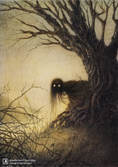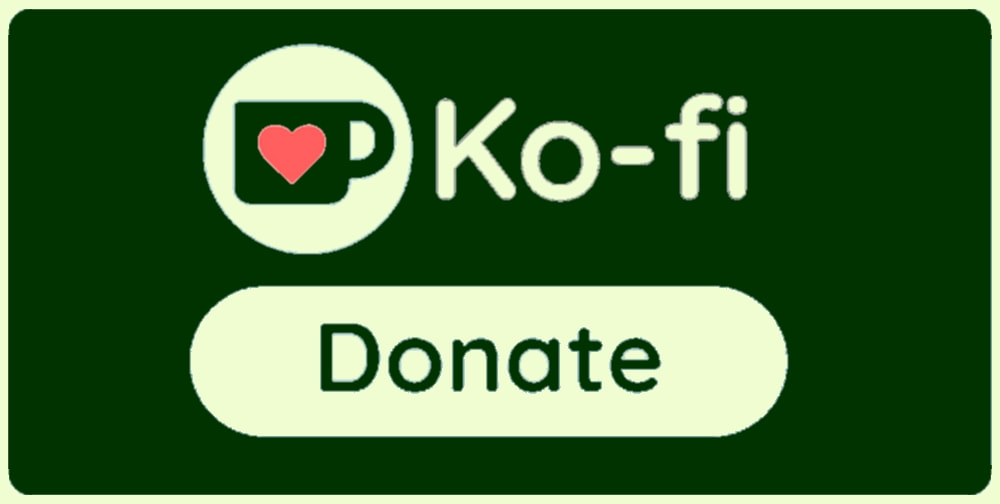"Among objections to Hallowe’en, as now constituted, are these: it is too commercialised; it is American; trick-or-treat encourages child gangsterism; trick-or-treat endangers children; the whole thing undermines Guy Fawkes day; it is Satanic. " - Christopher Howse, The Telegraph, 2010
Samhain (which means summer's end) was an important festival in the Celtic calendar. It marks the time when livestock were brought down from upland summer grazing to be cared for near people's dwellings. Driving cattle through the smoke of Samhain bonfires was a common act of purification or protection. Like Beltane, when the cattle were let out again, it was considered to be a liminal time when otherworldly beings were likely to be about. There are numerous references to meetings, feasting, divination and games at this time in Irish mythology and in history. There are also many customs in Ireland and Britain that may be survivals of pre-Christian Samhain traditions, but most of that is very difficult to prove. The idea that Samhain is "the Celtic new year" is really a neoPagan one, taken, like so many things from Sir James Frazer's writing.
In the 11th century, All Souls' Day began to be celebrated on November 2nd, tacked onto All Saints' Day (or All Hallows, which gives Halloween its name) on November 1st. All Souls' had originally been celebrated in the early spring, and may have been moved to its current date because people were venerating their ancestors at Samhain, but that's another thing that we have no historical evidence for. What is likely, though, is that much of the stuff about ghosts and ghouls is linked to the Christian holiday, which was deeply concerned with the question of purgatory and aiding lost souls. Bonfires, which were already popular at this time of year, became connected in people's minds with lighting the way for the departed, and perhaps warding off unwelcome wandering spirits.
| All this continued without complaint from the church until the Protestant reformation really took hold in Elizabethan times. After that, practices became more localised and focused more in the country than the towns. Catholic areas, were less affected by the reformation, so their customs changed less. The feasting and fires continued in some of these areas, while more generally, what remained was a sense of danger and fear, directed toward the supernatural realm -- a fear of ghosts, witches, and the evil eye, or whatever local folklore had to offer in the way of nighttime monsters. |
| Entertainments of The Dark Time If Samhain is summer's end, then it must be winter's beginning. For those on farms, as most of our ancestors were a century or two ago, this meant a complete change. Livestock brought in-by for feeding and safekeeping required many chores be done during the increasing hours of darkness. Anyone who has had to make the trip from house to outbuildings on cold dark nights knows it can be a bit creepy. At the same time, people used to spending most of their waking hours out of doors, suddenly found themselves facing long, boring evenings inside. It's no wonder that a rich and varied set of entertainments grew up to fill the long winter evenings. Some of these customs feel like they could be pre-Christian survivals, but, as usual, this can't be proved or disproved. Many of these traditions are now quite localised, and others probably died out unrecorded. | |
Although many of these traditions have a fixed date near Midwinter, it wasn't unusual to see some of them making a sort of practice appearance around Samhain. Some customs may have originally belonged to Samhain/Halloween and later shifted to the Christmas and New Year period because people were more inclined to be generous then. To say that any one of these traditions is the origin of trick-or-treating is to miss the point of how widespread it was.
Guy Fawkes, meanwhile, developed its own set of traditions over the years, built on the general love of disguise, fire and mayhem during the dark time. Eventually the patriotic and anti-Catholic overtones were mostly lost. Children often did much of the collecting of fuel for the bonfire, and when I lived in working-class neighbourhoods in Edinburgh, this included pallets and broken household furniture like chairs and wardrobes. Towering stacks were built in the week or so leading up to Bonfire Night, and guarded so that rival fire builders didn't steal what had been collected. A few children still made a Guy out of old clothes stuffed with straw or paper, maybe put on masks or old sheets, and went 'round collecting "a penny for the Guy", for which they were expected to sing a song or something. The Guy was ritually thrown onto the fire and burned. The money might be spent on fireworks or treats.
Some of the traditions I've just talked about definitely had an element of threat about them. Mari Lwyd parties were sometimes feared, as much as welcomed, because they would cause havoc once admitted to the house. Equally, once men and boys were disguised, out after dark, and possibly full of ale, they might see an opportunity to frighten people or get their own back on an unpopular employer or teacher.

The Irish, if fact, seem to have been the main source of modern Halloween traditions. The massive influx of Irish immigrants to the US in the mid nineteenth century, brought traditions like disguise in elaborate costumes, turnip/pumpkin lanterns, and going door to door to the US, where it slowly spread to the rest of the population and became associated increasingly with children, until by the 1930s it became more like what we know today. By the time of my own childhood in the early 1960s, American Halloween had become the festival of plastic tat, nylon costumes and cheap chocolate overload that we see today - although I'm sure parents probably invested less time and money in it than they are expected to do now.
In the past twenty years, American Halloween has been relentlessly exported back to Britain. The massive Guy Fawkes bonfires are still popular, but the kids going 'round asking for "a penny for the Guy" and doing their wee songs, and giving you black looks if you don't hand over at least a couple of quid, has almost disappeared. All that has been overshadowed by store-bought costumes and trick or treating for sweets. (The corporations win again!) I'm sorry to see it go because, in its way, I think it was a much more "Pagan" holiday than American Halloween will ever be. It belonged to real, working class people. The ones whose ancestors got called pagans by the sneering Romans and the disapproving Christian clergy in earlier times. It was home made. Made from a random mixture of ancient customs, poorly understood politics and stuff kids scrounged up to make it happen, usually without their parents' help. It was an indigenous custom people did, not one they purchased.
So am I proud to celebrate the biggest holiday in the Pagan calendar? Meh! I stopped celebrating Christmas before I even figured out I was a Pagan, because I couldn't stand the commercialism, and the general orgy of stress and spending. My feelings about modern Halloween are much the same. I'm puzzled at how people belonging to a set of beliefs which supposedly values Mother Nature so highly, can buy so much plastic junk, disposible party ware and other things that have no hope of being recycled, and say they are celebrating Paganism. And if that doesn't describe you, then I'm not talking about you, so don't get offended.
If you enjoyed this post, you might also like Oss Oss!












 RSS Feed
RSS Feed




